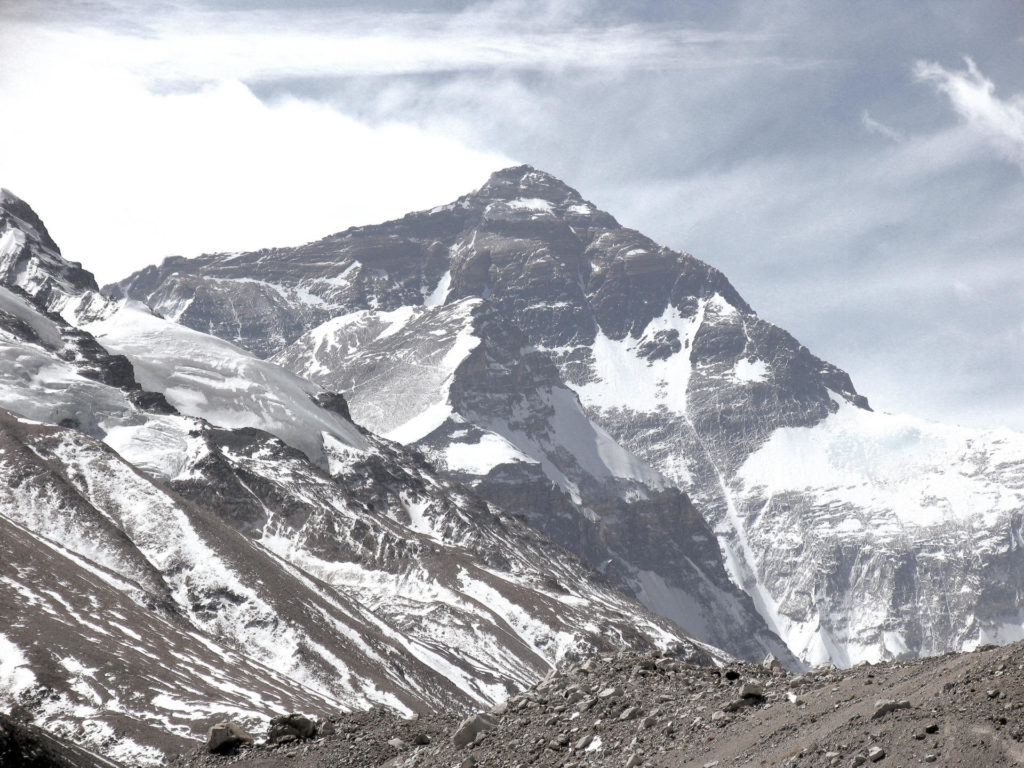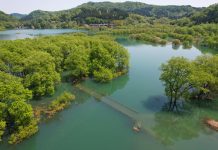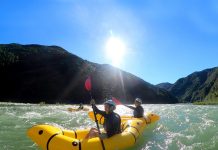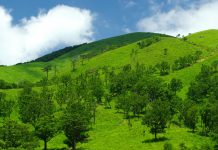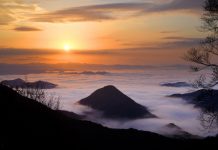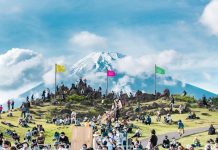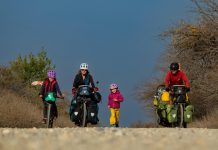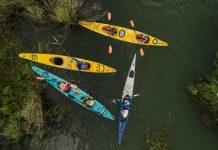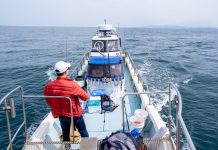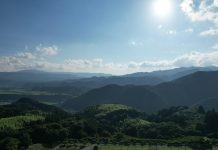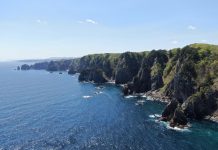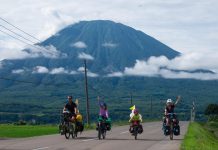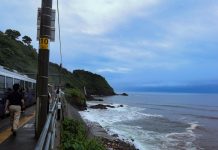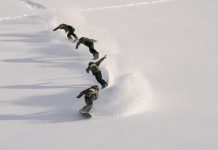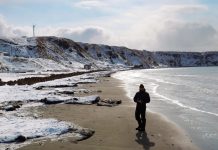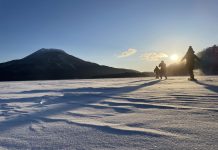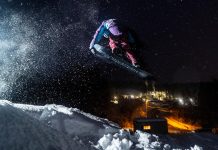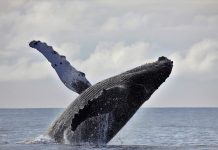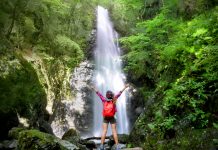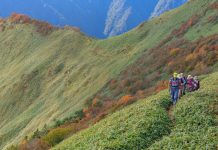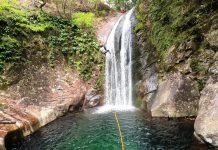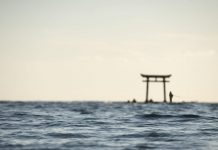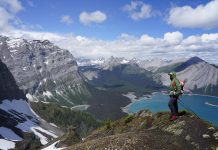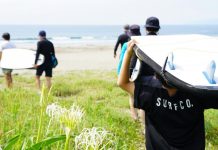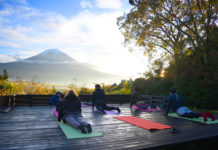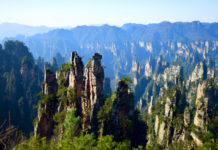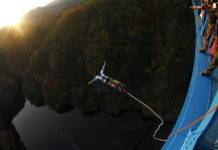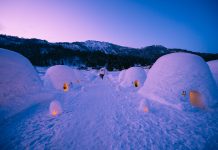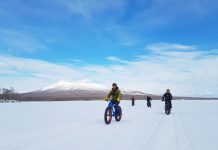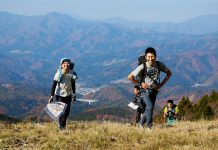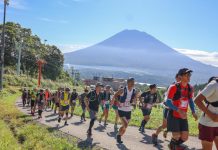On the scale of great enthusiasms and devotions it’s hard to think of anything physically, emotionally or symbolically grander than conquering the world’s highest mountain. But what motivates people to climb really big (and potentially dangerous) mountains?
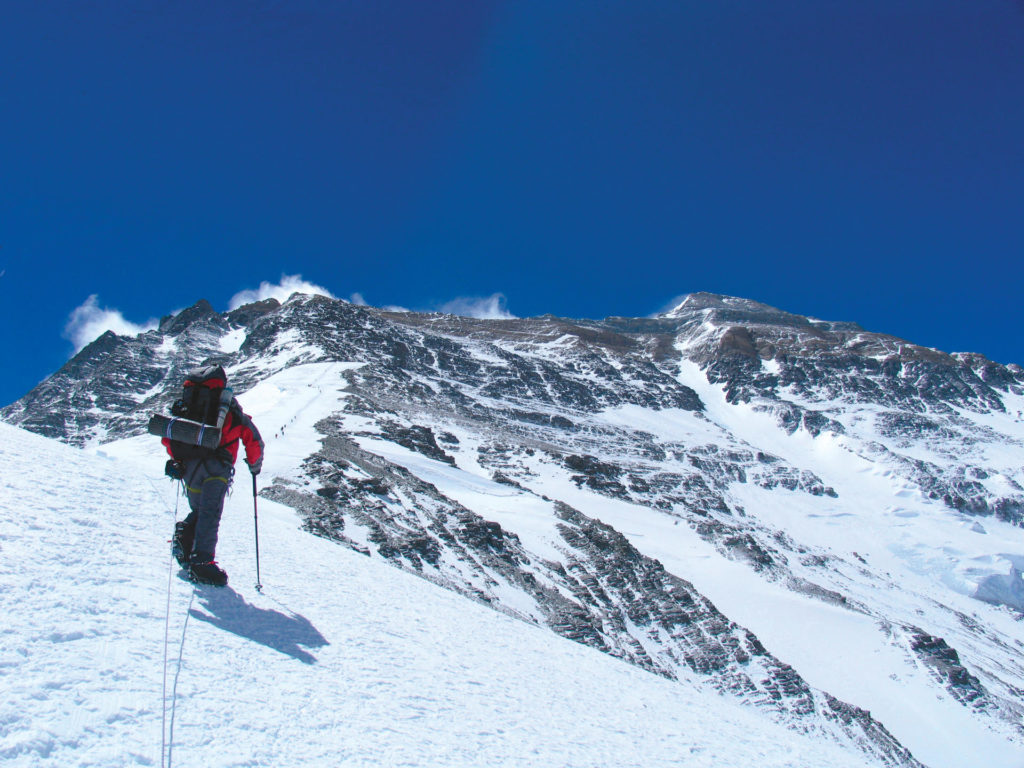
“It is not the critic who counts, not the man who points out how the strong man stumbles or where the doer of deeds could have done them better.
The credit belongs to the man who is actually in the arena, whose face is marred by dust and sweat and blood. Who strives valiantly, who errs, and comes short again and again, because there is no effort without error and shortcoming, but who does actually strive to do the deeds, who knows the great enthusiasms, the great devotions, who spends himself in a worthy cause.
Who at the best knows at the end of the triumph of high achievement,
and who at the worst, if he fails, at least fails while daring greatly,
so that his place shall never be with those cold
and timid souls who know neither victory nor defeat.”
-Theodore Roosevelt
Introduction: On the scale of great enthusiasms and devotions it’s hard to think of anything physically, emotionally or symbolically grander than conquering the world’s highest mountain. But what motivates people to climb really big (and potentially dangerous) mountains?
There’s a famous answer to this question, of course, yet it doesn’t explain some basic realities for people not accustomed to recreational activities that can voluntarily lead to serious injury, or worse. Yet the idea of standing atop an 8,000-meter mountain, looking down at the world, appeals to the adventurer in all of us, albeit mostly from a vicariously safe vantage point. And so we are intrigued by those daring souls willing to risk life, and quite possibly limb, to reach “The Summit”.
Before meeting Blair Falahey, an Australian climber living in Japan (when not assaulting 8,000 meter peaks), I watched “Touching the Void” for a refresher of the climber’s mindset, and to be reminded of the logistics, dangers and decision making climbers face on expeditions to the world’s most difficult – and dangerous – mountains. The following story recounts his first-hand account of climbing the world’s highest mountain. – Gardner Robinson, Editor-in-Chief
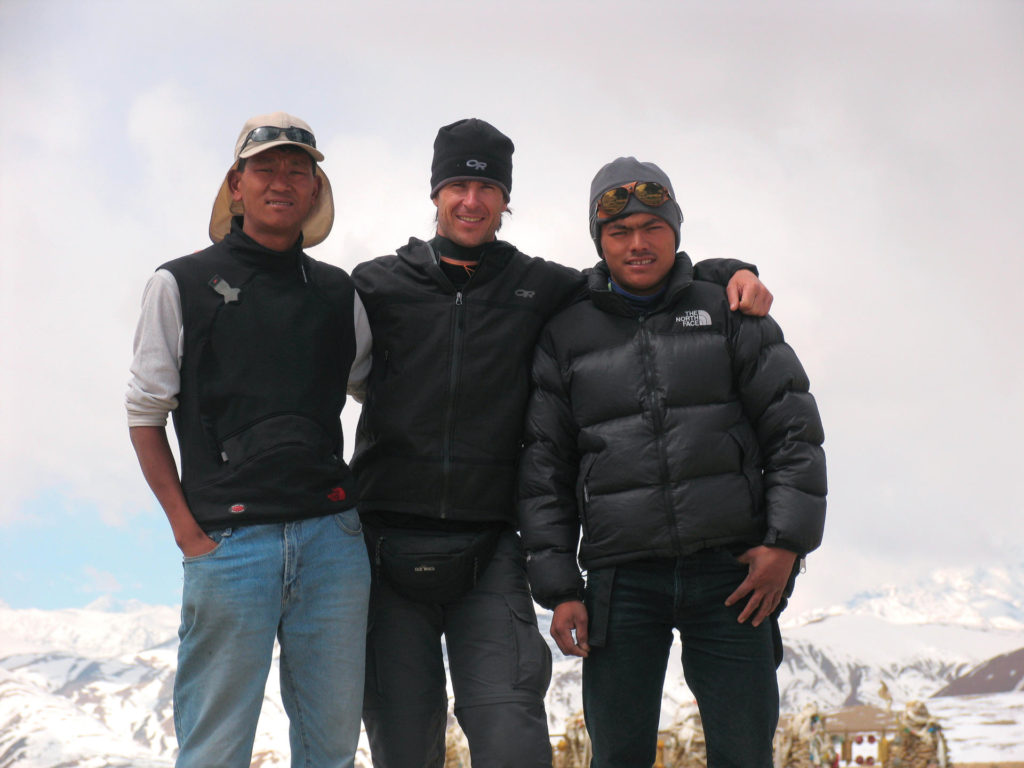
I was soon asking myself if I would be able to cut my buddy loose from the rope we shared if my life depended on it? Would I resent my friend for doing the same (that is if I survived the fall)?
Would I put myself in the position to have to make these life and death decisions in the first place?
The answers were sobering and made Blair’s journey to the roof of the world even more inspiring. Spectators weigh the risks and the rewards. For those in the proverbial arena, living in the moment, the necessary risks are merely challenges to overcome. It’s true, Everest has become a circus in some people’s eyes. People are shelling out exorbitant amounts to make ill-advised attempts at the peak.
Yet for climbers like Blair who slaved and saved to raise the resources to independently fund his trips, the motivation is more internal and ultimately more personally rewarding.
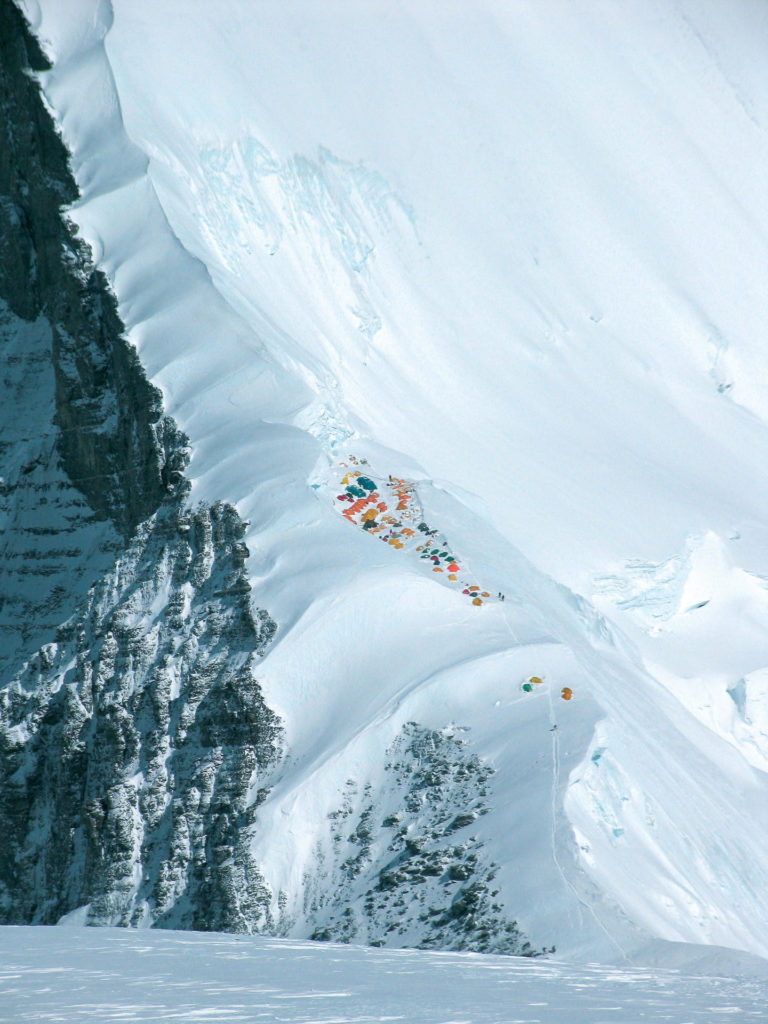
On May 18, 2006 Blair fulfilled his lifelong dream and stood atop Mt. Everest with his two sherpas, Pasang Nuru (31) and Karma Geilje (24). Prayer flags firmly In hand, dancing in the wind, his face flashes a surprisingly fresh-looking smile. Yet, as he repeatedly points out, the descent is much more treacherous than the ascent; in fact, on this particular climb he passed four frozen bodies, all of whom perished on the way down. So maybe there was a touch of trepidation in that wry smile, more likely it was a mixture of satisfaction and relief.
The culmination of the staggering amount of preparation, planning and logistics must have been incredibly satisfying, yet he admits even the most prepared can only minimize what could wrong on these trips. Some things are simply out of ones control. That’s why you carry prayer flags. Yet, the moment is gone like a quick gust of wind, it’s now time to focus on the task at hand. Getting back down alive.
Although Blair’s interest in mountains started as a kid listening to the romantic stories of a friend’s father who traveled the globe “bagging peaks,” his own mountain journey began in dramatic fashion near the ocean. In the ‘90s he was a promising Australian surfer and only climbed casually.
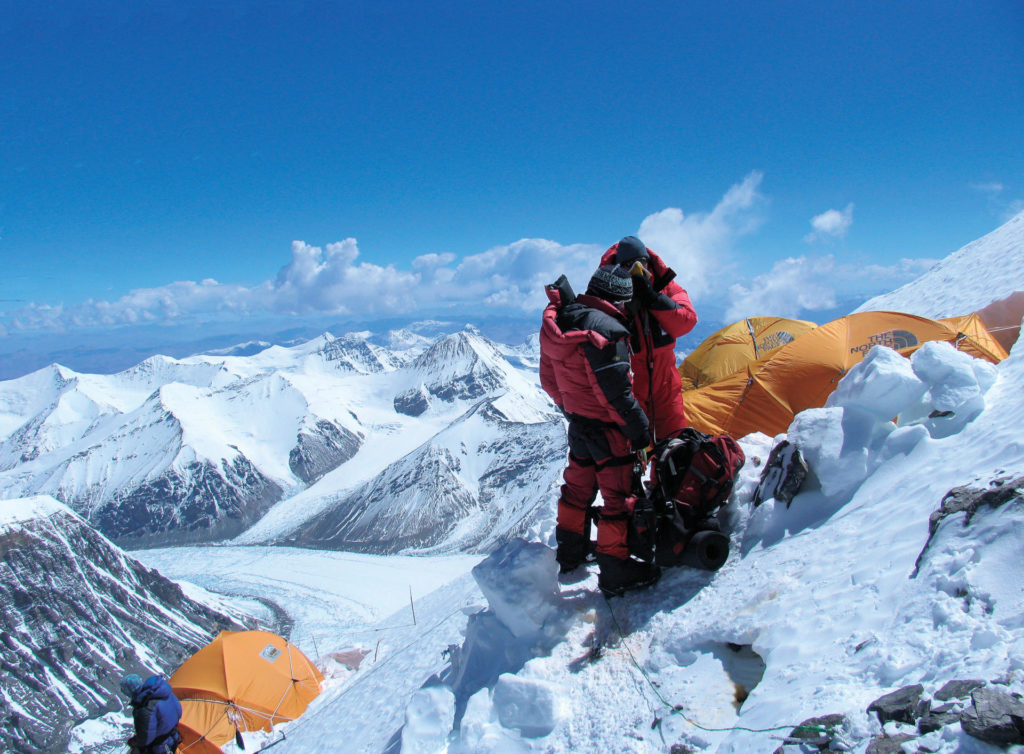
On a surfing trip to Lombok, a Muslim island to the east of Bali in Indonesia, while camping he was attacked by a looting group of villagers with machetes and nearly lost his arm. A period of intense therapy, and soul searching, ensued as his surfing career came to a sudden halt. Inspired by the book, “The Climb,” a Russian guide’s 1996 account of climbing Everest, he traveled to the mountainous region of Bolivia with a company called Bolivian Journeys, exploring the glorious peaks surrounding La Paz. In 2001 he visited Nepal and Everest base camp for the first time and was hooked. To get himself ready for 8,000 meter mountains he started climbing 3,000 meter peaks in New Zealand.
In 2003 he brashly chose to climb Mt. Cho Oyu (8,201 meters) solo from the Tibet side. His expedition was a humbling experience, admittedly, “I got my ass kicked,” he said later. His expedition leader had a heart attack. He had “a glove malfunction” helping a German climber in distress leading to frostbite on nine of his fingers. His doctor said he wouldn’t be able to climb big mountains again due to sensitivity to cold. In hindsight, he wasn’t ready, but he survived, was still determined and learned some valuable lessons. Ed Viesturs, the first American to climb all 14, 8,000 meter peaks told him, “Getting to the top is optional, getting down alive is mandatory.”
That’s become his approach to bagging peaks. In 2004 he took a year off to recover, then in 2005 climbed Lhotse (8,516 meters, fourth highest mountain in the world) but wasn’t able to summit due to inclement weather and to help another climber suffering from altitude sickness and exhaustion. He spent the rest of the year organizing equipment and planning for his ultimate goal of climbing Everest in 2006. It was a two month expedition on Summit Day.
SUMMIT DAY
By Blair Falahey
10.45 p.m.
Depart High Camp
Through the darkness the summit beckons. There is a large white triangular snow face just below the true summit called the “tehydral”. I know to keep looking at the summit on big mountains like this is only torturing yourself, because you are moving so gradually that it seems like you are not getting closer to the goal.
Years ago on my first expeditions I had worried about moving too slowly and tried to compensate by climbing quicker. All I did was tire myself out. The slopes of Everest are littered with the frozen corpses of dead climbers that never made it back down. It’s usually a case of climbers pushing themselves to their physical limits to gain the summit. And simply just not having enough energy in reserve to ensure they get themselves down safely. The secret to being successful on an 8,000m mountain is focusing on underachieving so you can overachieve when you need it most. Summit Day.
1.31 a.m.
The North Ridge
Until now it had been extremely cold. The weather seemed stable. But to say I wasn’t nervous or have the urge to try climb faster would be a lie. As I moved across to the rope Pasang Nuru (31), one of my sherpas, said to me “Yeah, good weather” then gave me a high five. It was a defining moment. I knew Pasang had attempted Everest four times but never summitted. For him to say this now must meant we had really lucked out with the weather and for the first time I started to believe we are actually going to do it.
2.25 a.m.
Base of First Step
Located at 8,650 meters, the First Step of Mt. Everest is not so much difficult as it is awkward. Half way up I discovered the exhaust valve in my oxygen mask is partially blocked with ice, making it hard to breathe. I needed to unblock the valve. The easiest solution would be to take the mask off and try to remove the ice manually. But to do so now would be too dangerous and risky. I had another idea. I stuck my tongue on the exit valve in the hope that the warmth from it will thaw out the ice and unblock the outlet. Here I was hanging over a 3000-meter drop down the North Face of Everest on a thin piece of tattered rope and I’ve got my tongue sticking out of my mouth attached to a block of ice inside my oxygen mask.
For a minute I laughed to myself at how silly I must look. The ice felt like it was loosening up. I blow out hard to try clear the exit valve. Nothing. I try again but nothing happens. I take a deep breathe and try once more and… SUCCESS!
4.13 a.m.
Base of Second Step
Next up, the Second Step – the hardest part of summit day. The Second Step is actually a two – level vertical step 40 meters high. I am a bit shocked just how massive and vertical it looks in the darkness. The climber in front of me clips into the rope and starts his way up. I soon realize he has no idea what he is doing and doesn’t have the strength to make it up the Second Step. I am getting cold standing around and to wait much longer could put me at risk of frostbite. I move over to the struggling climber. I know nothing about him. I don’t know who he is or which team he is with, but I do know that if I don’t get moving soon my dream of climbing Everest will be over.
Out of choices and out of time I put my hand on his shoulder and say, “I’m sorry my friend but if you can’t climb this on your own you have to step aside and let others go in front of you.” It took a moment for him to take in and register what I had said, but he nodded his head, unclipped from the rope and moved aside. The Second Step is both technically difficult and down right intimidating. Slowly I manage to work my way up to the top of the rock and the first part is behind me. The upper part actually has a ladder strapped to it.
I had thought it would be easy but when I get to the base and discover the climber ahead of me is still on, so I am a little annoyed. Now I am getting cold. I stomp my feet and bang my hands together trying to warm them up. But up this high in the cold little helps. I try to be patient. But silently I am screaming “Get off the ladder!”
He finally manages to get off the ladder. Now it’s my turn. At the top of the ladder I make the mistake of going too high. My rope ascender jams making it impossible to remove from the rope. All attempts fail. I am getting tired working on the rope and holding on to the ladder at the same time. I feel completely ashamed of myself for making such a mess of things. I lay my forehead on the ladder and rest for a minute. “Come on! It’s irrelevant how you got yourself into this situation. Its how you get out that counts.” I berated myself. I reach over and release the rope ascender enough to let it slide a little down the rope. First try and the ascender pops open. A minute or so later I am up and off the ladder and on solid ground again.
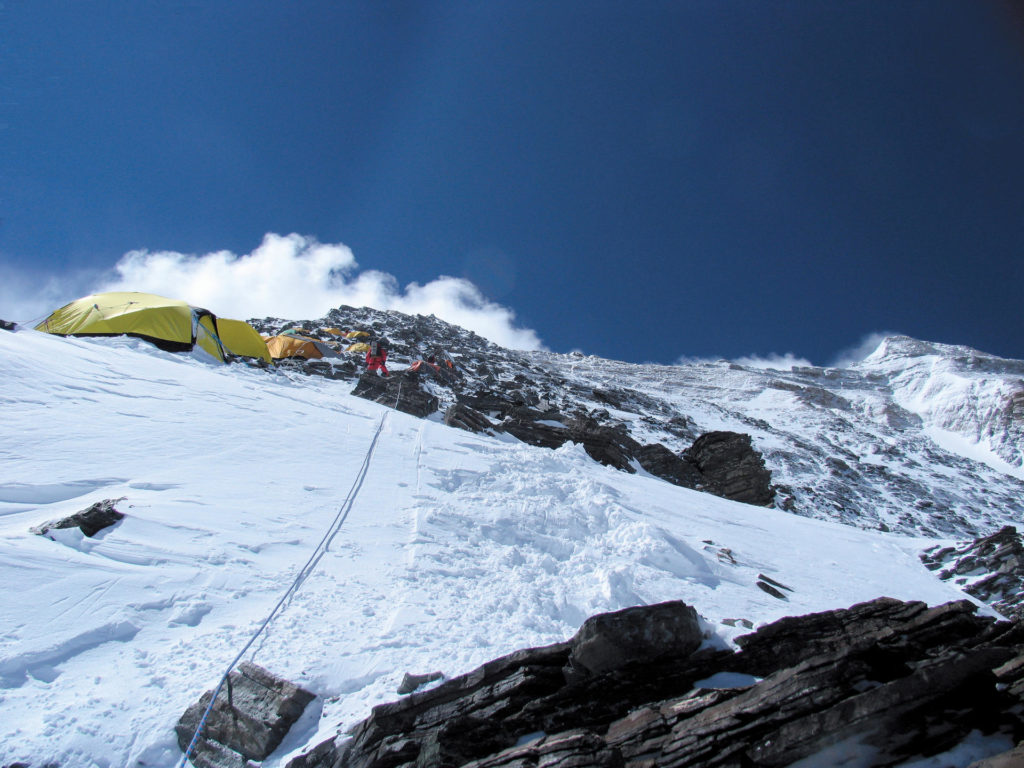
5.22 a.m.
Base of Third Step
They say just before the sun rises is the coldest part of the day. Today is no exception. It’s freezing, and I am thankful for the five pairs of gloves I am wearing. The wind starts to blow and whips clouds of ice crystals from the summit ridge. This worries me. I stop and take a look around to assess the weather condition. It still looks clear down in the low valleys and the sky seems clear. No sense for panic yet, but I make a mental note to pay closer attention to the weather from now on.
Lying in the snow less than five meters away is the frozen body of a European climber from last year. He had summitted too late and alone.
On the way down he ran out of oxygen, sat down in the snow and went sleep for eternity. I say a quiet prayer for him before heading back up the fixed lines towards the summit.
The climbing is steep and hard work. But I am so close to the summit that nothing will stop me now. A lifelong dream is so close now I can feel it. At the top, of the fixed line the route leads off around to the right. And after a couple of minutes of climbing I find myself on a six-inch ledge with a 3000-meter drop below. To fall here would be the end. This is the most exposed part of the climb yet.
6.38 a.m.
Summit Ridge
At the top I scramble across a short, flat section to reach the top. A little out of breathe I stop and take a rest. Now I am on the Summit Ridge. A 100 meter stretch of snow is all that separates me from the top of the world. Finally I see the summit of Everest for the first time. It’s hard to contain my excitement as I move along the rope but I force myself to stay calm. Slowly I inch my way to the top.
6.48 a.m.
Summit
Just short of the summit I stop and catch my breath. Colored pray flags and oxygen bottles are scattered about the top. I put my head down and climb the last few meters to the summit.
When I get there I drop to my knees and kiss the hallowed ground. The emotion of the moment hits me and I begin to cry. Tears slowly form in my eyes and roll down my cheeks when I feel I hand on my shoulder, I turn around and it’s Pasang I give him an almighty hug. He is crying. It’s an emotional moment for him too. His fifth try and he finally has reached the summit of Everest. The first thing I do is call my father. I take out my satellite phone and turn it on and punch in the numbers to my father’s mobile phone. It rings, then I hear my father’s voice on the other end of the line.
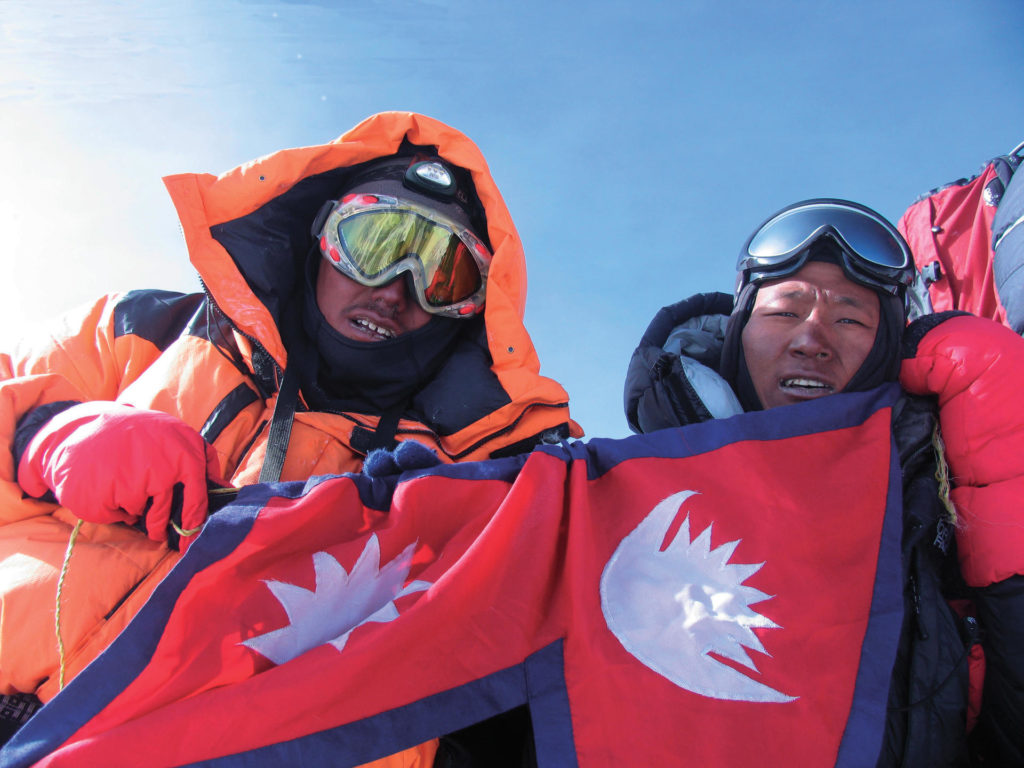
“Summit, summit, summit. I am standing on top of Everest dad. I did it; I am on top of the world.” I can hear my dad yelling out, “He’s done it. He’s on the top. He’s done it. He’s done it.” For a few more minutes I speak with my father and brother. I tell them I am ok and that it has been a tough day but it was worth it. Here I am sitting on the highest point on the planet chatting with my family. It’s cold sitting around. And it’s time to see if my camera is going to work. I push the “on” button and the camera comes to life, “ YESSS!” I can’t believe I’m so lucky. I realize I’d been snapping so many photos of everyone else that I needed to get one of myself. I hand my camera to another climber sitting on the summit and ask him to take some shots of me. I pose with my sherpas for a summit photo.
Then take out the prayer flags given to me two months earlier. I hold them in my left hand as they flutter off in the breeze beside me. He snaps a few photos of me and hands me the camera. I didn’t know the climber’s name but I’m forever in his debt for taking such nice shots.
Reaching the summit, the climb is only half over. But for now I have done it. I have reached the summit of Everest. Just before heading down I stand on the summit and think, at this point in time there is no one on the planet higher than me. It seems corny now. But it was true and it’s something that nobody will ever be able to take away from me.
45 minutes.
Time spent on the summit
Fortunately, the descent went fairly smoothly. On way down, however, in broad daylight, I was able to see the bodies more clearly. I also passed a Brazilian climber I had got to know well while he was still on his way up. He was the last climber on the mountain and I offered to leave him some oxygen but he said he was ok. Back at High Camp the weather started deteriorating quickly and tents were getting ripped off the mountain. We made a decision to hole up there for the night and descend in the morning.
Before I climbed into the tent I saw a climber standing straight up at the Second Step putting on a headlamp and I thought, “he’s up way to high, way too late, he’s not going to make it down.” He did somehow manage to get down to High Camp sometime later that night, but died a couple hours later of exhaustion and altitude sickness. The next morning the weather cleared and we headed down as quickly as possible.
Halfway between the first and second step, I came around the corner and almost ran into the body of the English climber that had caused a stir recently, David Tharp. He was right on the edge of the route, legs out over the trail so I literally had to step over him. He had died two days before and I didn’t even see him on my way up. Nor did I notice the nearby cave where an Indian climber, called “Green Boots” has been residing for 10 years.
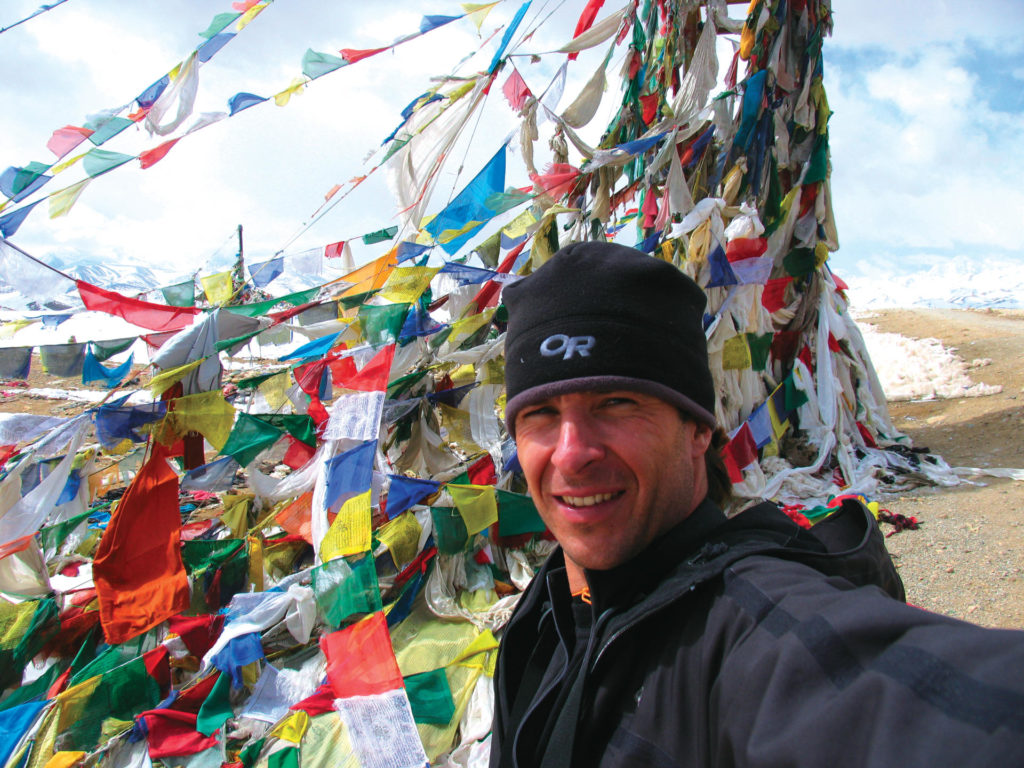
Since returning from Everest people often ask me why I did it. I would love to give you some brave and heroic answer, but, the truth is I did it for myself. To prove to myself that against all the setbacks in my life. Against all the odds, I could do it. For months I had trained and prepared for this expedition. As I ran through the cold, rain and snow I never believed I could or would not do it. Everest was expensive. It cost me a lot of money. It cost me a lot of time. I made many sacrifices just to get the chance to stand on that tiny patch of snow and rock on top of the world. If only for a few minutes. To many people it must seem like a waste of time and money. After I got back a complete stranger came up to me and asked, “Was it really worth it?” I stopped and to think about how I should answer his question. But in the end the answer is easy. “Absolutely my friend.” I say. “Absolutely.”
Blair will be leaving in late March for another shot at Lhotse. You can follow his latest climbs and contact him through his Web site: www.blair8000.com.
